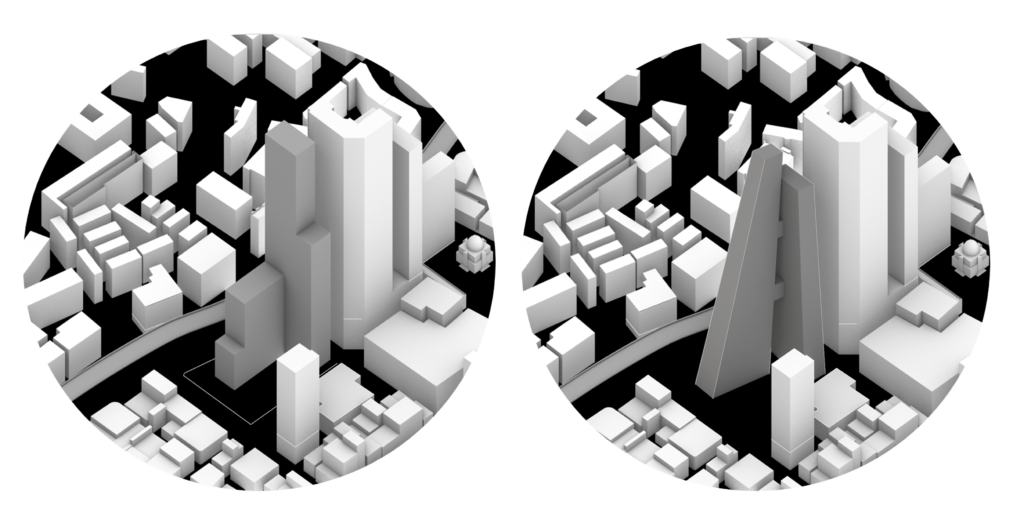Mumbai is located in India and has a warm and humid climate. To understand the holistic city planning in Mumbai, the ISHRAE code for thermal comfort was understood concerning Analyses that were carried out. From the standards, we could see that 35 degrees Celsius and above was considered to be hot and below that temperature was considered as the desirable range. Concerning the Humidity, 75-100 % was considered very Humid. The Dry bulb temperature analysis for the city shows that the Hotter months are from March to June and during October. In terms of Relative Humidity, the city’s humidity levels above the desirable range are from June to October. Combining these analyses, we could see that most natural ventilation was needed from the sea from June to October.

.From wind Rose, we can see that the prominent direction of wind in Humid months is from west and South-west. The total radiation for Mumbai is also looked at and then analyzed to see which direction we get the harmful radiation from, which is from the south and south east. Hence, it can be seen on the urban level, that old Mumbai is planned to capture the cooler west sea winds. The grid of the city is being dictated by the prevailing wind direction.
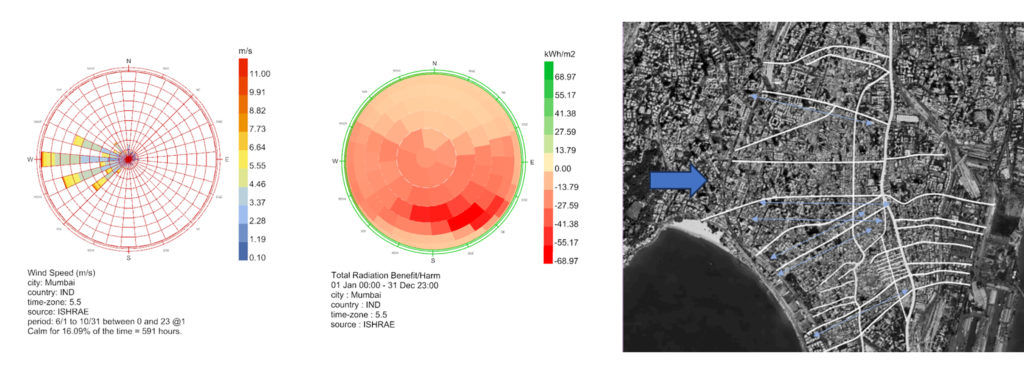
The chosen site is located in the heart of the urban city in a highly dense zone. In the neighborhood of the selected site, we have two residential buildings/ towers which define the microclimate of the site. In turn, the proposed design should be looked at through the lens of having the same effect of microclimate on these two buildings.
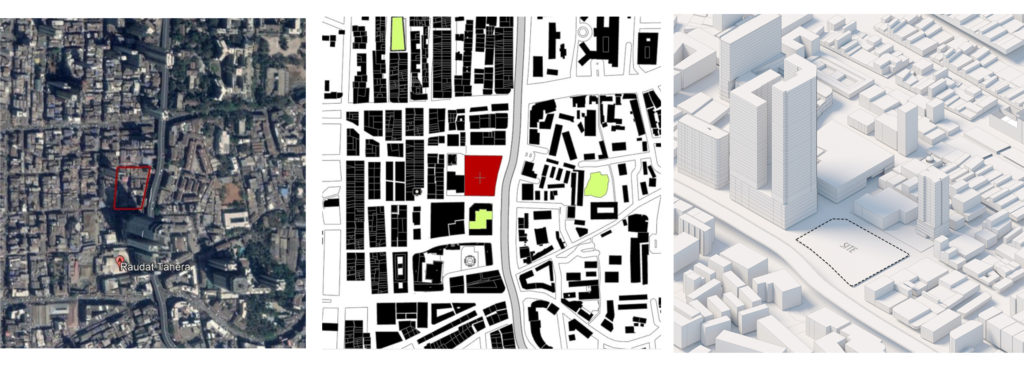
The thermal comfort charts indicate that the thermal comfort is highly uncomfortable from April to November and also denote how the winters are much more comfortable. And this resulted in our design decision to make sure our high-rise project doesn’t shade the neighboring context during winter and have minimum impact on them.
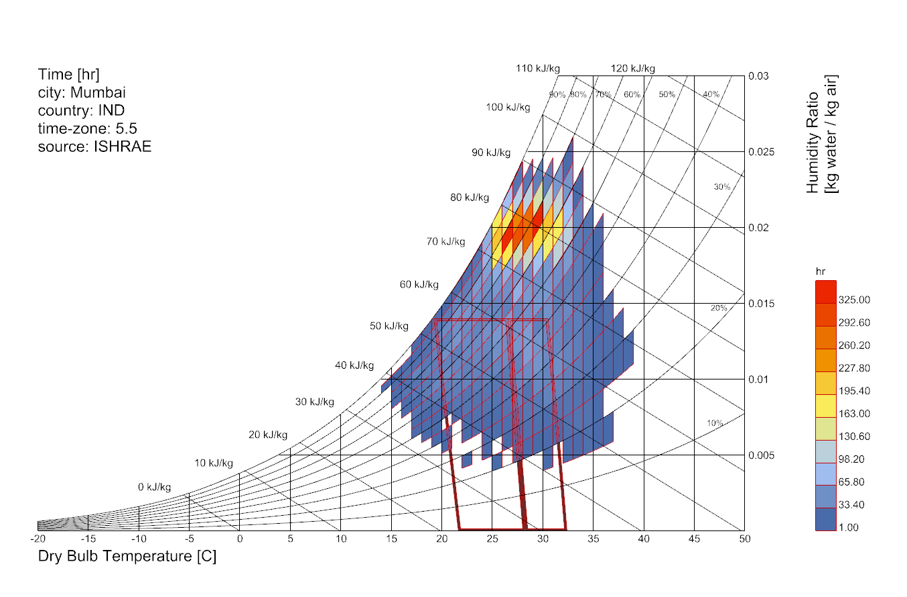

With these analyses and criteria in mind, the design development is also based on solar collection and solar rights. The solar rights envelope unlike the solar collection envelope cannot be used as the building height generated will be very low with such a high FAR. The tapered solar collection is looked at for informing the massing design.
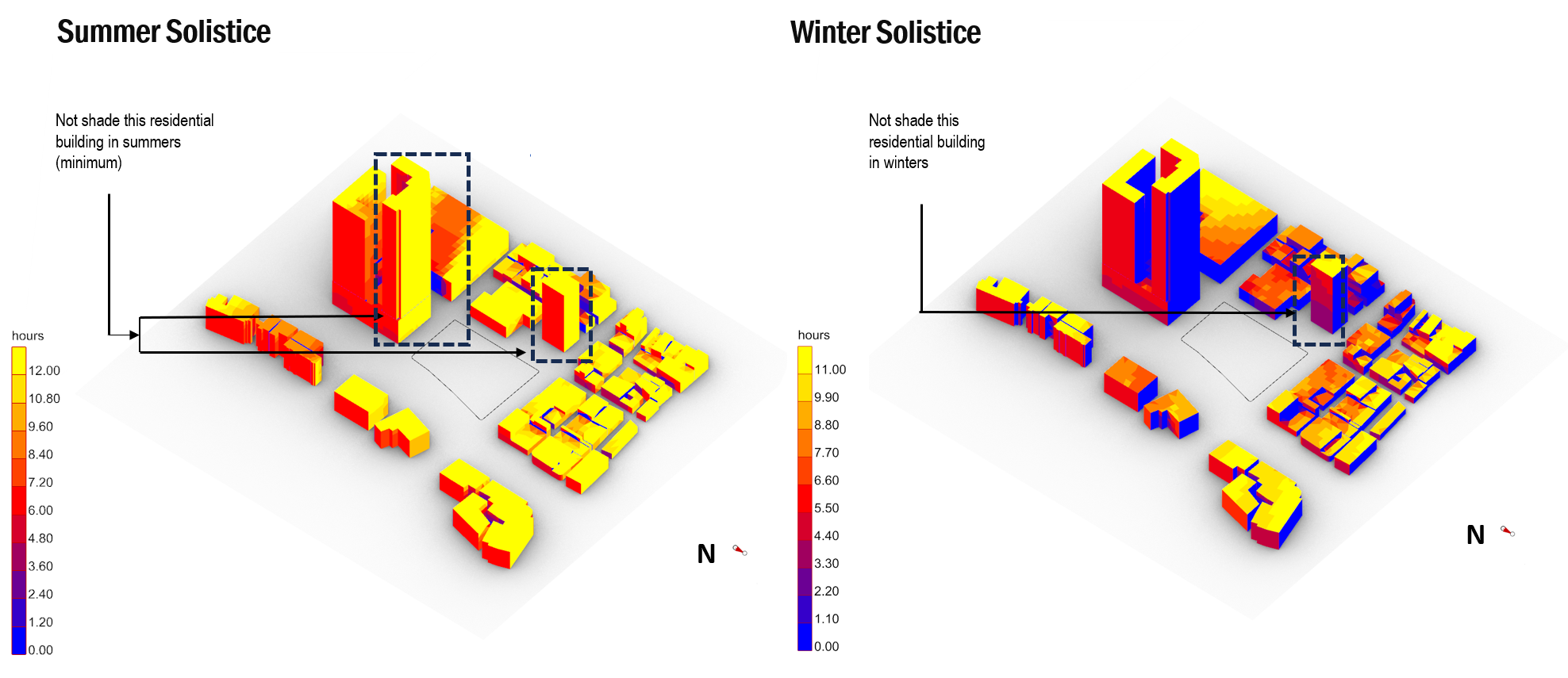
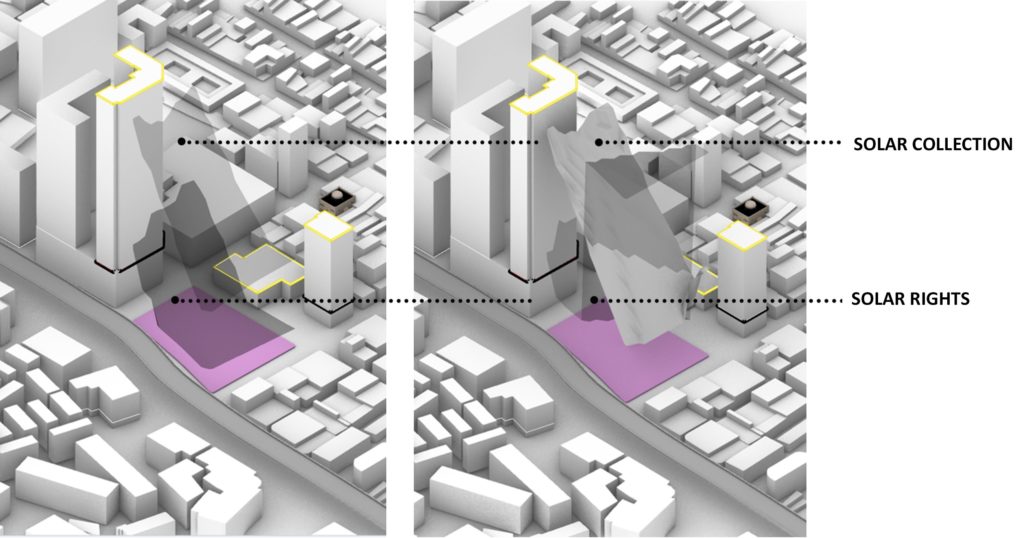
Based on the solar envelope analysis, two different massing designs were developed to understand the effects of shade and sun hours on the design as well as its context. The first massing design involved an L-shaped tower to keep the maximum distance from the west side, thus creating a public plaza towards that end where the breeze is greater. This allows the residential building on the right side to receive sunlight even during winter.
The second massing design was looked at as three blocks orienting itself to the west while tapering down creating plazas on either side. This however shaded the building on the right side and resulted in fewer sun hours during winter which was not a preferable solution.
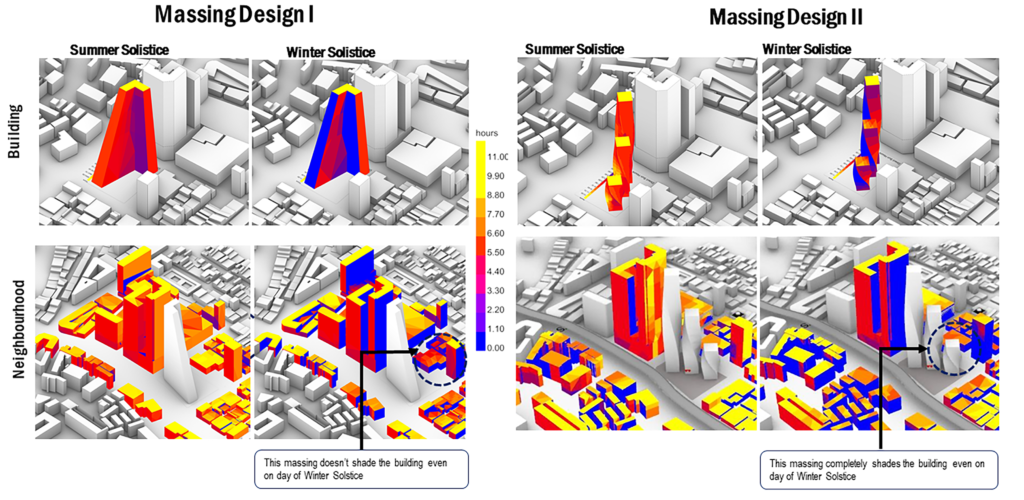
UTCI Analysis :
Further, the UTCI hourly plot was analysed and it shows that the percentage of time it is hotter than the acceptable limits was 75.18% which accounts for most of the time. The percentage of time the condition is within the acceptable limits accounts for the remaining 24.82 %. Since its a very hot and humid climate, the percentage of time it is colder than the acceptable limit is 0%.

The public plaza created in these massing designs reacts faster to these temperature changes. This results in the surface getting heated up during summer mornings. The L-shaped tower in comparison with the other massing allows for a bigger shading area for the plaza thus helping to keep it cooler during most of the periods.
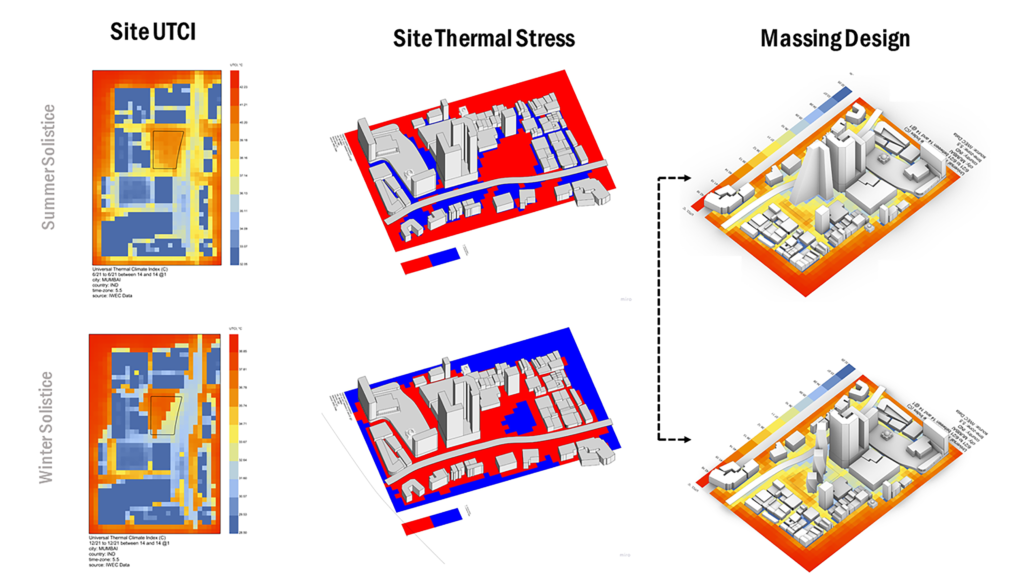
The plaza was further analyzed with the use of material UTCI applications to see which design would result in the most cooling during both summers and winters.
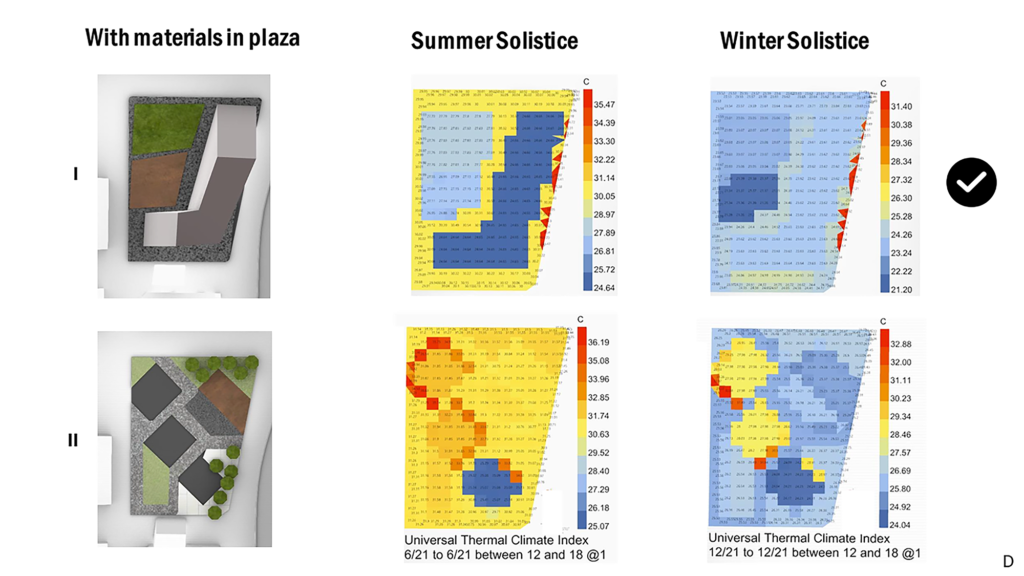
Daylight Factor :
Going Further with the L-shaped tapered massing design, this was analyzed for openings using daylight factor and for Wind Analysis using InfraRed using a stepped or terraced design. The daylight factor with a goal factor of 2 to 5% was studied in three cases. In our base case scenario, keeping the shading offset as 0.45 m (as per regulations), the average daylight factor was 1.21 %. This was then optimized for the height of both towers to achieve an average daylight factor of 2.29 %. The window numbers were optimized in the third scenario to achieve a daylight factor of 2.786 % while keeping the window-to-wall ratio at 30%.
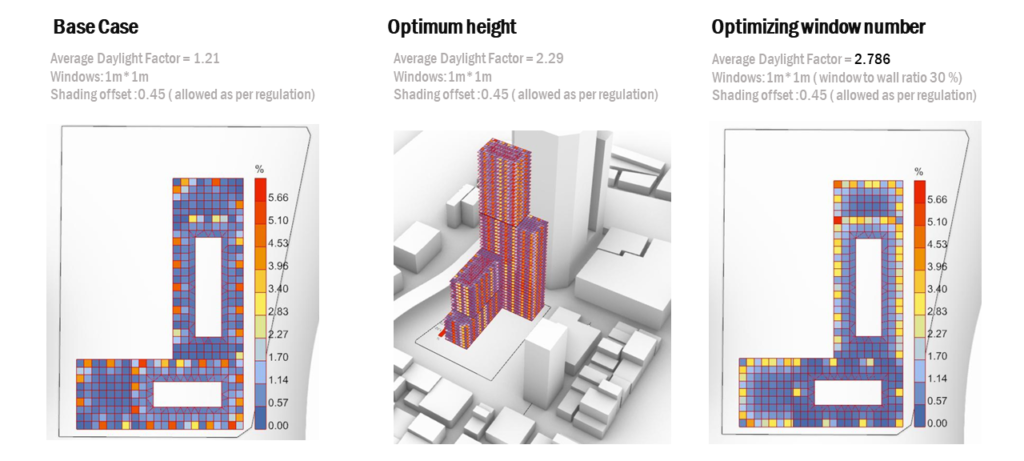
Wind Analysis using InfraRed :
The wind comfort was analysed taking into account the higher wind speeds from the west. The wind speed was considered to be 11 m/s. The base case scenario gave an average wind comfort of 66% which was already well within the desirable range. Further testing by adding trees and rounding off the edges of the building, we achieved 67%. This also points to how higher wind speeds are much more favorable in a warm and humid climate like Mumbai.
Though the higher wind speeds for wind comfort analysis didn’t make much of a difference, the variations after adding trees and rounding off edges with lower wind speeds created much more favorable conditions resulting in increased ventilation in the plaza area.
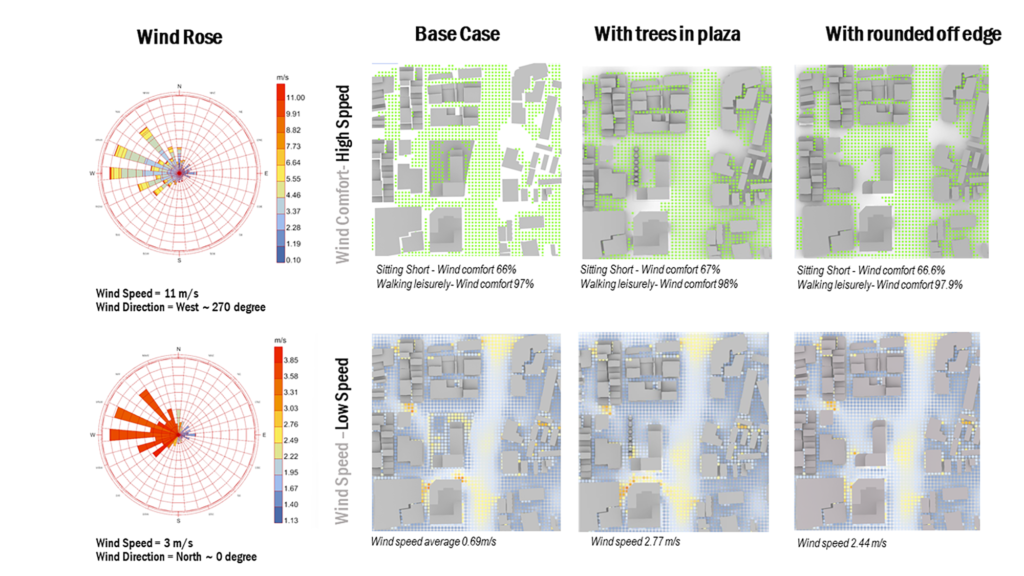
Wind Simulations using Tapered Massing :
The wind simulations carried out using eddy3d (wind speed of 11 m/s and wind direction from west -270 degrees) showed us differences between two scenarios- solid massing and massing with porosity. By creating a void or cutout in the massing, the wind vortex in the high zone areas was considerably reduced. The tapering massing also further enables the reduction of wind turbulence.
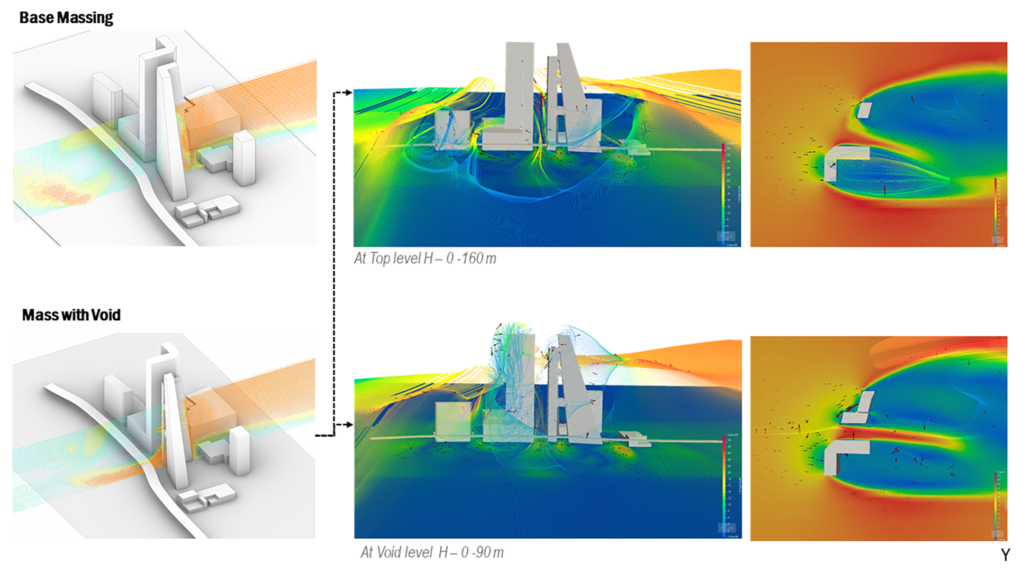

These analyses led us to develop two massing strategies which would work well for this specific site in Mumbai.
